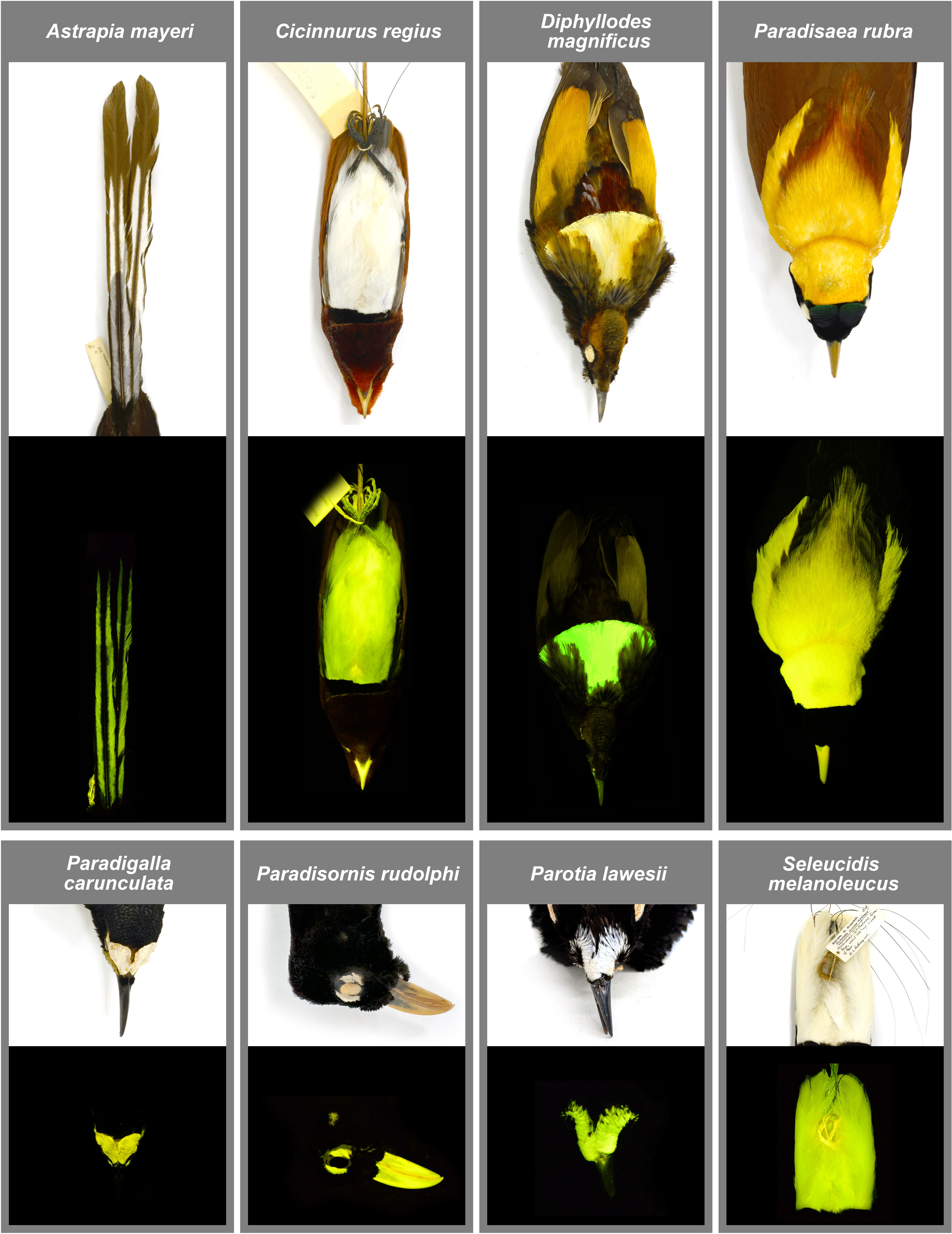The bird world has some of the funkiest displays when it comes to attracting a mate. From building elaborate nests to impress or mastering the moves of a dance, the birds of planet Earth know how to shake their tail feathers. Now it seems they’ve been putting on more of a visual display than anyone realized as birds-of-paradise have been found to glow.
ADVERTISEMENT GO AD FREE
Birds-of-paradise number around 45 species and typically have elaborate feathers, colors, and mating displays. Birds also possess exceptional eyesight, seeing not just in the visible light spectrum like humans, but in the ultraviolet spectrum as well. Biofluorescence happens when high-energy wavelengths of light, like those on the UV spectrum are absorbed and then remitted at a lower wavelength, typically greens, yellows, oranges, and reds.
A team took a closer look at the 45 birds-of-paradise species housed in the American Museum of Natural History to see which possesses biofluorescent body parts. They looked at both the females and males of each species (present in all but one species) and even included blue-capped ifrit (Ifrita kowaldi) from the sister family Ifritidae, which contains only this single species.
Biofluorescence was present in 37 of the 45 bird-of-paradise species, in 14 of the 17 genera that they looked at. They also found that if the plumage was biofluorescent, then the males and females of the same species had sexually dimorphic biofluorescence patterns. Some species had biofluorescence on their bellies and breasts but this was less common. Though harder to study in museum specimens, some species did possess biofluorescence inside their mouths. Biofluorescence was also found on the feet of quite a lot of the species.

Some species had glowing tail feathers, while others possessed bellies, beaks, and even feet that glowed.
Martin, P. R., et al Royal Society Open Science (2025) CC BY 4.0
Biofluorescence also occurred in both male and female blue-capped ifrit from the sister family where it was found on the feet and bill of both the male and female and the white eye stripe of the male.
The team thinks that the biofluorescence feathers could be used to enhance visual cues during mating and courtship displays. They also suggest that in the forest canopies and undergrowth where many of the species live, the biofluorescenc could help them stand out against a background of similar colors. Likewise, some species have evolved “super-black” feathers helping this contrast stand out further. By comparison, the females have fewer regions of these feathers and the team thinks that they might use them instead to blend into the forest, aiding in breaking up their feathers and improving their camouflage.
The paper is published in Royal Society Open Science.
Source Link: Birds-Of-Paradise Found To Biofluoresce From The Tips Of Their Beaks To Their Toes